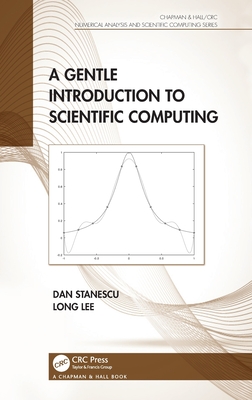Description
Scientific Computation has established itself as a stand-alone area of knowledge at the borderline between computer science and applied mathematics. Nonetheless, its interdisciplinary character cannot be denied: its methodologies are increasingly used in a wide variety of branches of science and engineering.
A Gentle Introduction to Scientific Computing intends to serve a very broad audience of college students across a variety of disciplines. It aims to expose its readers to some of the basic tools and techniques used in computational science, with a view to helping them understand what happens "behind the scenes" when simple tools such as solving equations, plotting and interpolation are used.
To make the book as practical as possible, the authors explore their subject both from a theoretical, mathematical perspective and from an implementation-driven, programming perspective.
Features
- Middle-ground approach between theory and implementation.
- Suitable reading for a broad range of students in STEM disciplines. Could be used as the primary text for a first course in scientific computing.
- Introduces mathematics majors, without any prior computer science exposure, to numerical methods.
- All mathematical knowledge needed beyond Calculus (together with the most widely used Calculus notation and concepts) is introduced in the text to make it self-contained.
The erratum document for A Gentle Introduction to Scientific Computing can be accessed here.
About the Author
Dan Stanescu received his undergraduate degree in Aerospace Engineering from the Polytechnical Institute in Bucharest, Romania. He then pursued his graduate studies at McGill University and obtained his Ph.D. at Concordia University, both in Montreal, Canada. His initial fascination with modeling fluid flow led him to develop both frequency- and time-domain computational methods for the study of aircraft noise. His publications include work in aeroacoustics, spectral methods, stochastic processes and biomathematics. Upon joining the Mathematics Department at the University of Wyoming in 2003, he directed the Institute for Scientific Computing for six years and initiated an Interdisciplinary Computational Science Minor program, currently offered to interested students at both the undergraduate and graduate level. He has taught a wide range of courses in applied mathematics and has been developing and using the material included herein, during the last ten years, for a core class that is part of this Minor.Long Lee is a Professor of Mathematics at the University of Wyoming in Laramie, USA. He received his Ph. D. in Applied Mathematics from the University of Washington in Seattle, USA. Before his Ph.D., he received a BS in Engineering and an MS in Geophysics.His research interests are in the area of high-performance scientific computing and its applications. He has published papers in computational fluid dynamics, nonlinear waves, and image sciences. He expanded his research to infectious diseases and network modeling in recent years due to the COVID-19 pandemic.His teaching interests are in the general area of scientific computing. In particular, he enjoys teaching numerical methods for engineering students. He has taught numerical methods, differential equations, and mathematical modeling, both undergraduate and graduate levels, at the University of Wyoming for more than fifteen years.

